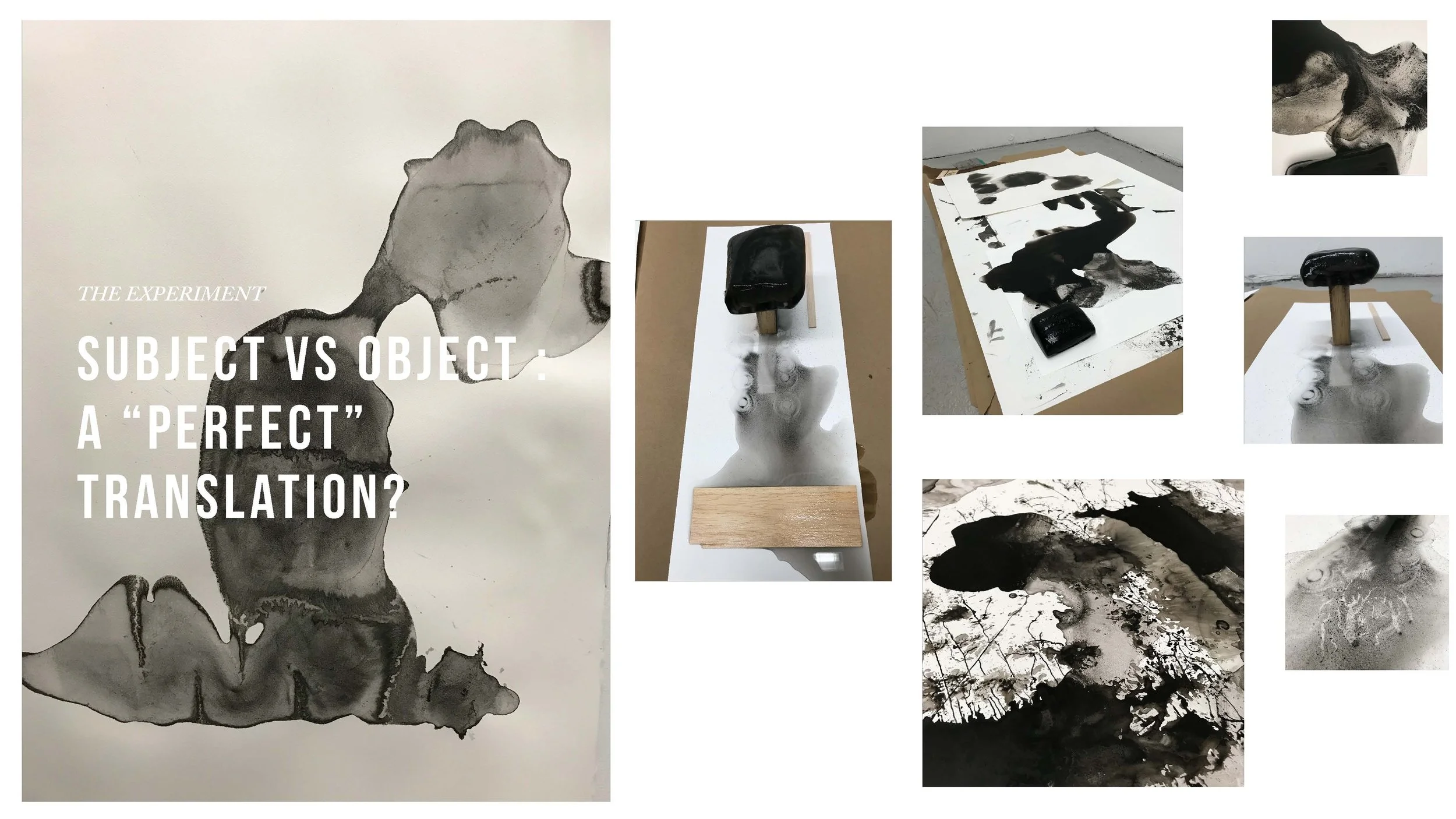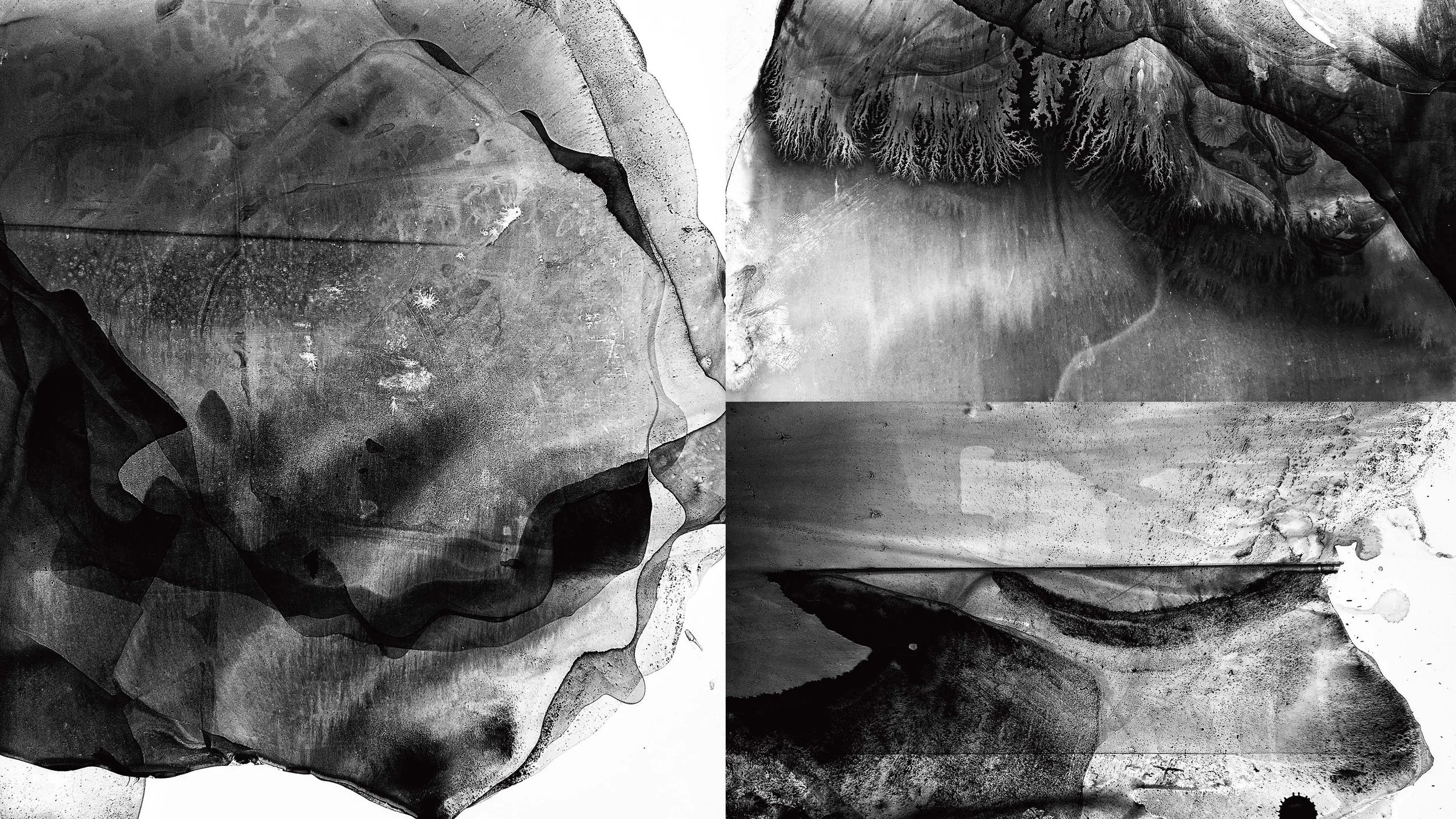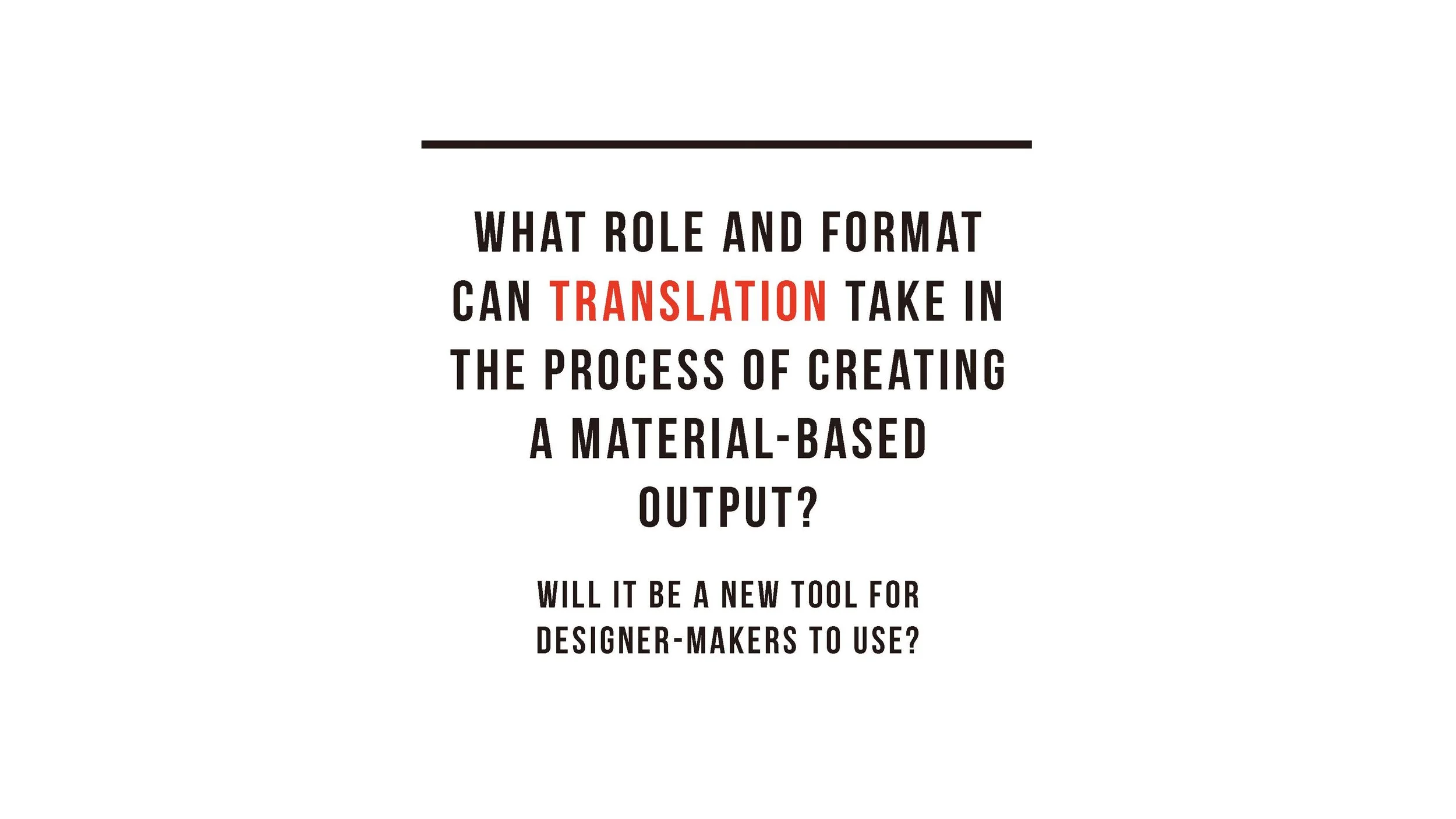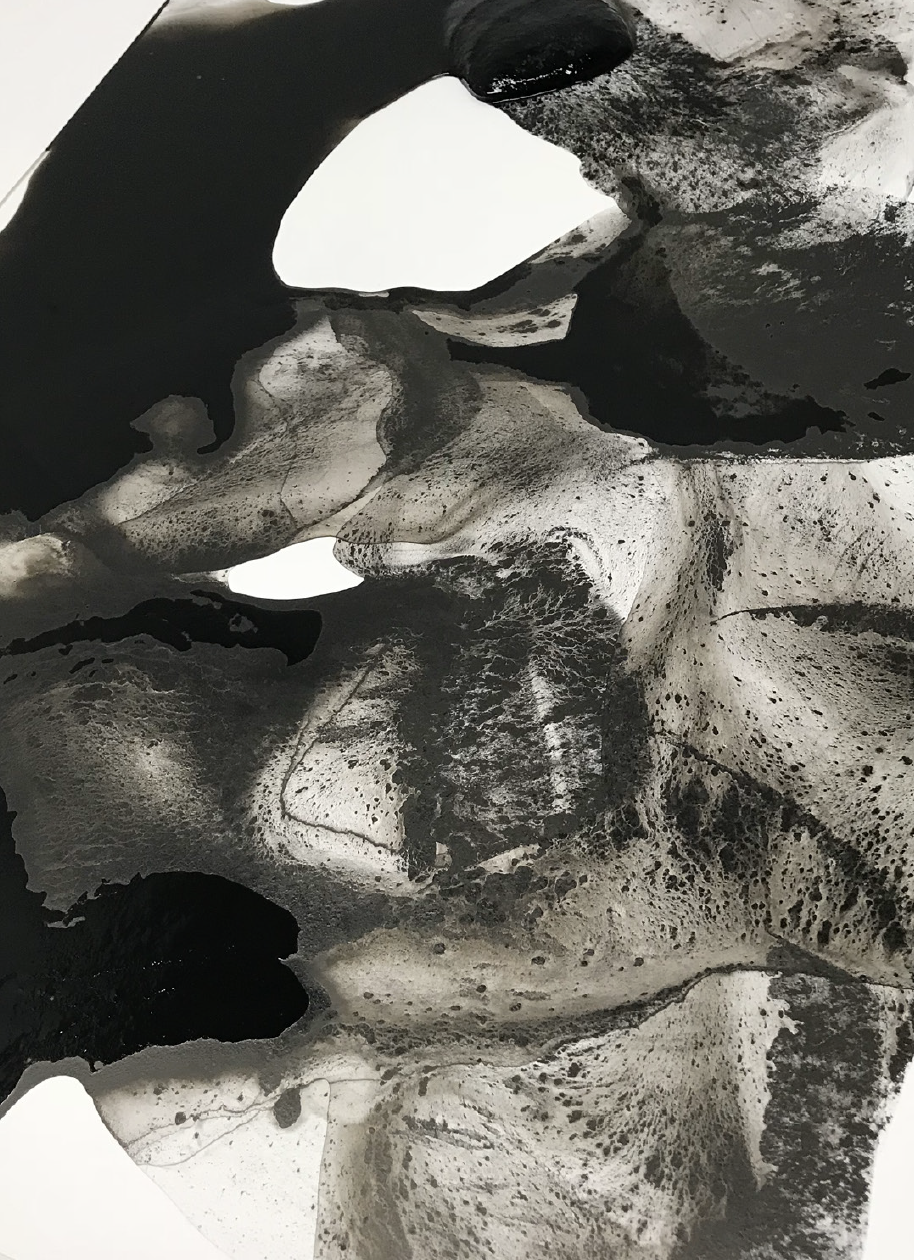TRANSLATIONESE
It is worth revisiting that “TRANSLATIONESE” has originally been described (Gellerstam, 1986) as the set of ‘fingerprints’ that one language leaves on another when a text is translated between the two, that any translated language variety, regardless of the source and target languages, might share characteristic features typical of translation as a mediated communicative event.
This fingerprint can hardly be avoided in languages, but how about in materials and images?
In my research and experiences, I am interested in the idea of liquidity. Both in terms of representational movements, and literal material takes. So, in this experiment or method that I developed, this fluidity is literally in the medium itself.
So is it a perfect translation of the subject into the object, is it still the same “language” or is it now in the form of “TRANSLATIONESE?” Is the final image an underrepresentation of the original?
Ink, Yupo paper
My involvement with “the artist” here is minimal. I am drawn to the idea that something formless and “invisible” is made visible and brings “affect” and “percept” together. In this experiment, the gap between the subject and the object becomes vague and does not exist. In one of the paintings, the ink leaves a very interesting and curious shape. It looks like the back of an animal or human being. The viewer may ask if this can be some sort of metaphor intended. But knowing the automatic process of this painting, any recourse to metaphor becomes rather difficult, creating a sense of strangeness.
A question to ask and chew upon is whether this merge of subject and object become something that pushes the boundary of form and formlessness. Is this a successful example of the total translation of subjects into objects? If we take a step back and look at our own bodies, as subjects and objects, how will this method and experiment develop? This is something I will spend more time on in my future practice.






